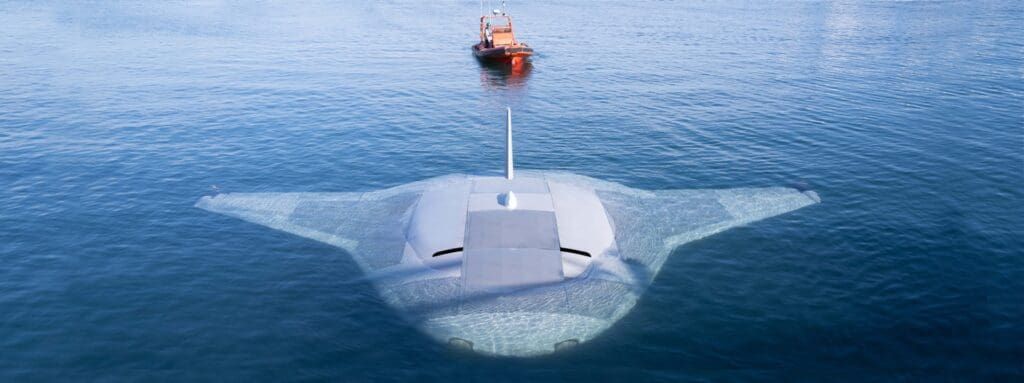Recent satellite images show the new Manta Ray drone at the Port Hueneme Naval Base of the United States Navy located in California, standing out for its significant size and dimensions. The innovative submersible drone developed by Northrop Grumman, and under the Defense Advanced Research Projects Agency (DARPA) program, focuses on demonstrating a new category of unmanned naval platform with long autonomy which could be configured to perform various types of missions.
The images were taken between the months of November 2023 and April of this year. In them, the Manta Ray is distinguished by its large size, larger than originally thought, at the Naval Surface Warfare Center-Port Hueneme Division (NSWC PHD), where it has been developed and research on the project.
Regarding the tests carried out, the Manta Ray has completed an initial round of tests in the water in the first months of the current year. Until now, “Manta Ray [ha al menos] demonstrated its ability to plan, ascend and descend, turn, float and anchor,” according to Northrop Grumman. “You can do some of [esas tareas]…autonomously, avoiding the need for on-site human logistics or a human captain.”
With a “wingspan” 45 feet and a length of 33 feet, this unmanned vehicle is designed for various naval missions, including surveillance, underwater mapping, and mining operations. The drone’s modular design facilitates its transportation and assembly in the field, while its gliding technology allows it to operate efficiently with low energy consumption.
So far, neither Northrop Grumman nor DARPA have released dimensional data or other specifications for the drone. However, Northrop Grumman has noted potential challenges in operationalizing the design due to its size and highlighted steps it has taken to mitigate these issues in an internal news story published earlier this month.


“Most large underwater vehicles, such as submarines, are so large when fully assembled that they cannot be transported on a truck or ship. “Our engineers designed the Manta Ray with these considerations in mind.”according to Northrop Grumman. “Thanks to its modular design, the Manta Ray can be separated into parts for easy shipping. “Then it can be assembled in the field.”
Among some of its capabilities, the Manta Ray and its glider-like design helps it increase payload capacity while maintaining the ability to operate persistently over very long distances, Northrop Grumman noted. However, details about what payloads the Manta Ray could carry and what missions it could perform are limited.
Regarding the latter, the medium The War Zone mentions that some of its missions could be intelligence, surveillance and reconnaissance, including underwater mapping, as well as mine hunting and mine laying. Finally, the American company also mentions that it can be anchored to the seabed and “hibernate” until necessary. Currently, the next steps for its testing and technological transition with the United States Navy are being explored.
It may interest you:In response to the arrival of the Russian flotilla in Cuba, the US Navy unveiled the presence of the nuclear submarine USS Helena in Guantánamo








